Des Moines University Medicine and Health Sciences has opened a new campus spanning 88 acres, over three times larger than its previous location.
Designed by RDG Planning & Design and built by Turner Construction, the $260 million campus features technology-rich, flexible educational spaces that promote innovative teaching methods, expand research activity, and enhance clinical services. The campus includes four buildings connected with elevated pathways and totaling 382,000 sf.
The five-floor Edge of Advancement building serves as the front door to the campus and includes administration, event and learning commons, alum hall, and student support spaces. The Innovation building includes academic and dining programs, as well as a simulation center where students can practice providing care and performing surgery. And the Health and Wellbeing building offers recreation facilities, clinic, and counseling suites. The project also includes a campus support building with parking.
The new campus, which has achieved LEED Silver certification, has 700 geothermal wells for energy-efficient systems. With significantly reduced energy consumption and carbon emissions, the project achieves a 56% reduction in electric use and 65% reduction in embodied carbon.
To promote mental health and wellbeing, the campus integrates multiple green and gathering spaces. The site features a new pond and connects with local trails.
“With its 125-year legacy of excellence in medical and health science education, DMU has long been leading the way in holistic healthcare education,” Mike Houston, RDG planner and senior partner, said in a statement. “Collaborating with the university on this project allowed us to push the boundaries of what a health sciences campus can achieve.”
Founded in 1898, DMU comprises three colleges offering 10 graduate degrees in medical and health sciences.
On the building team:
Design architect and architect of record: RDG Planning & Design
MEP engineer: IMEG
Structural engineer: KPFF
Construction manager: Turner Construction
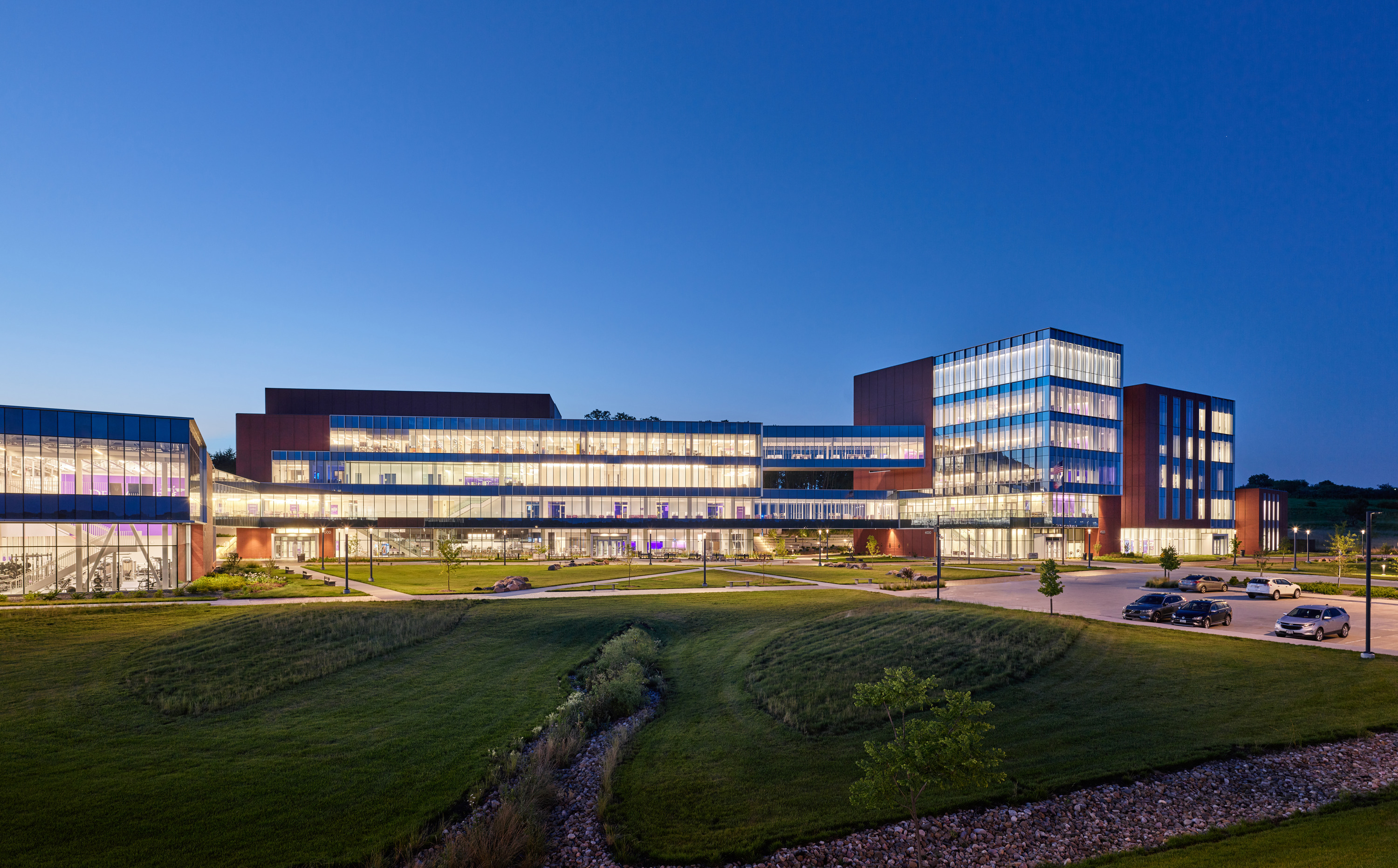
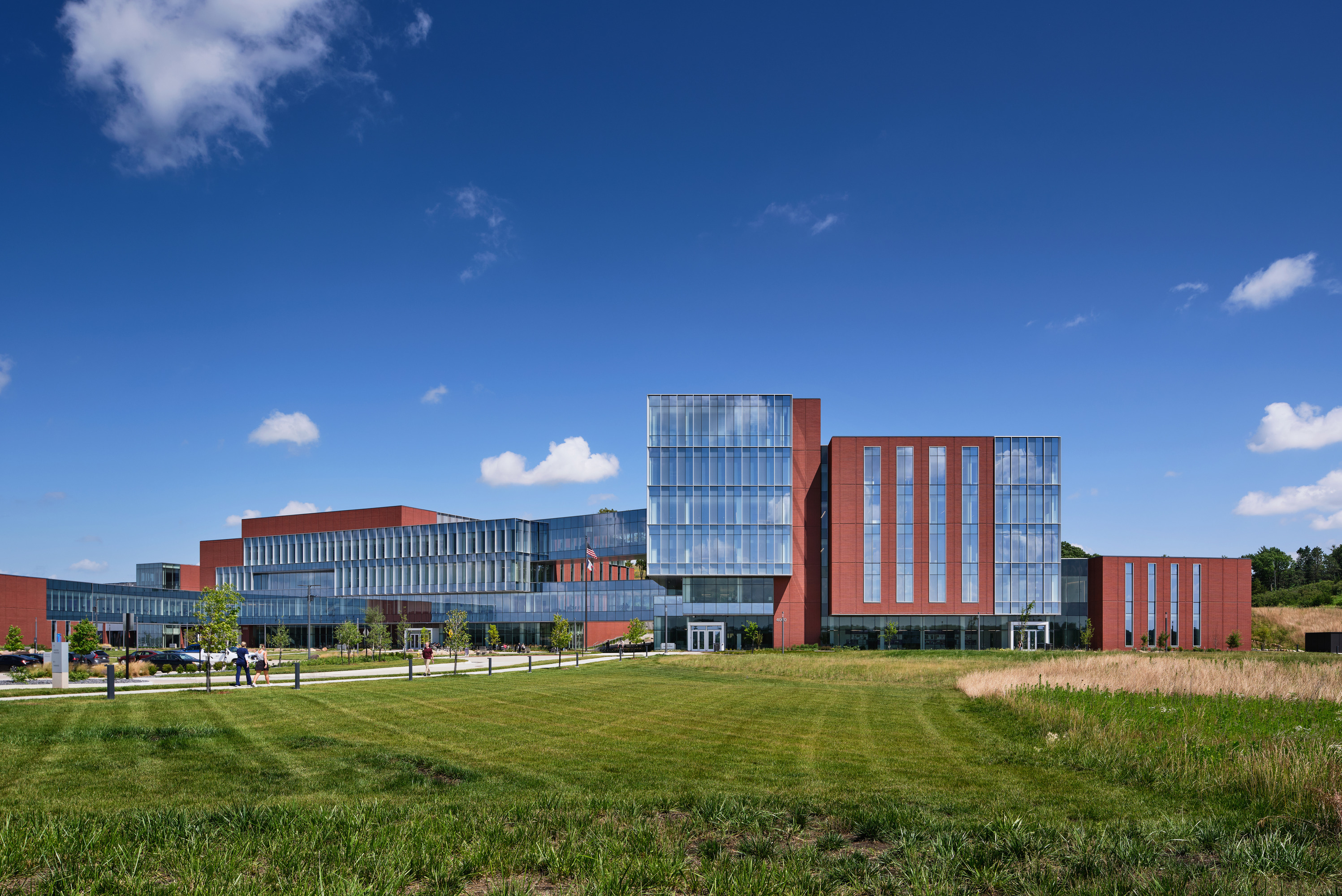
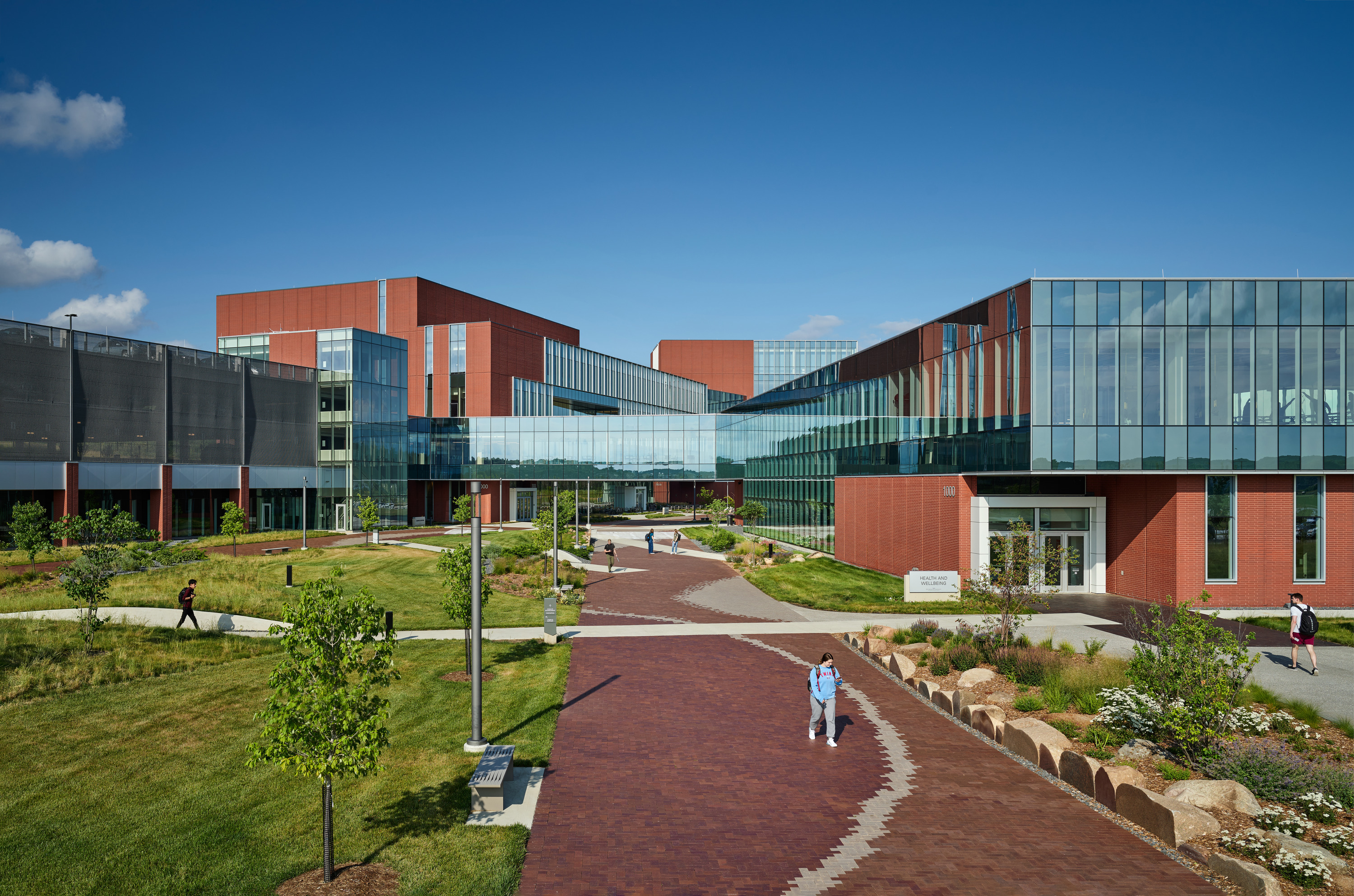
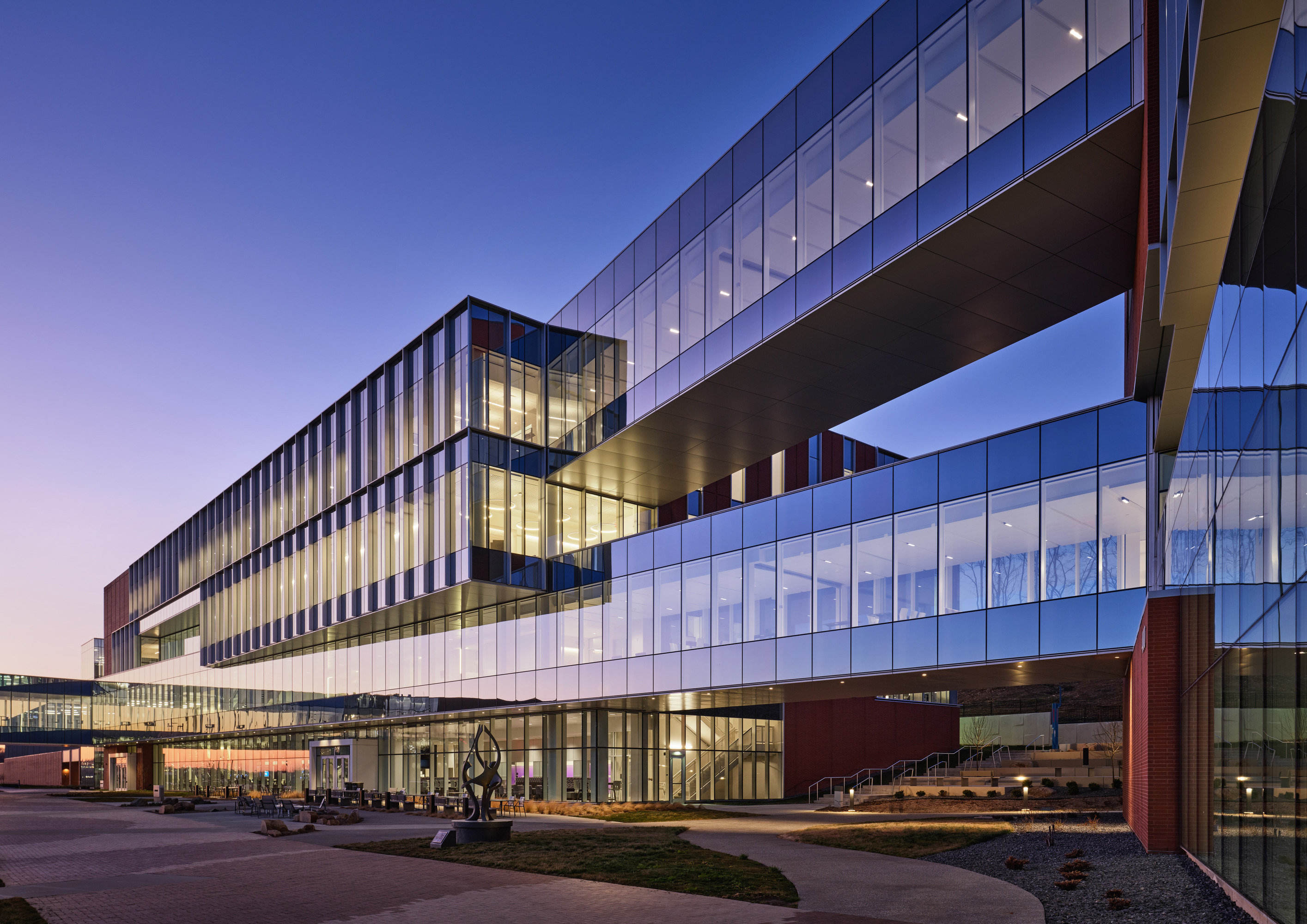
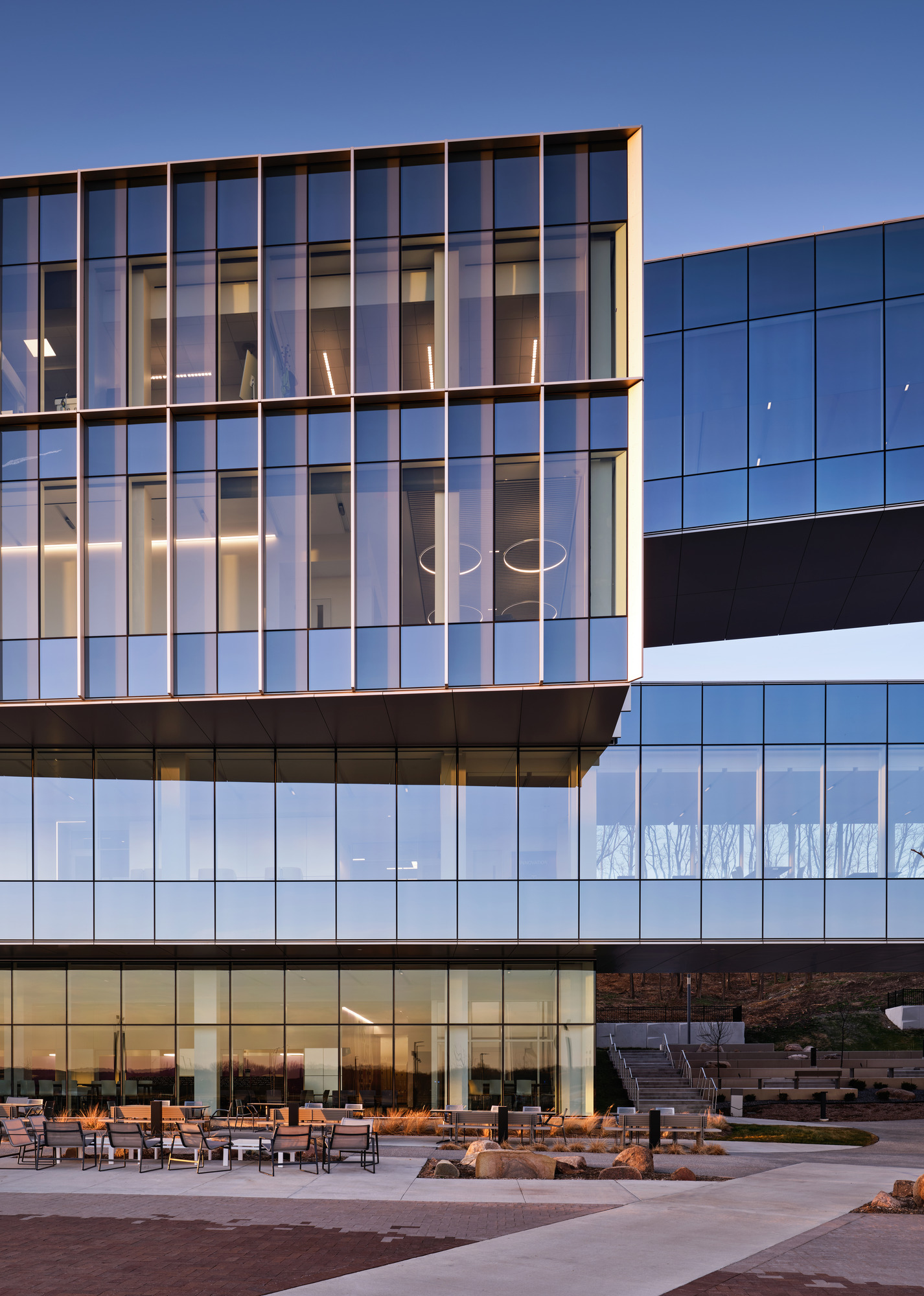
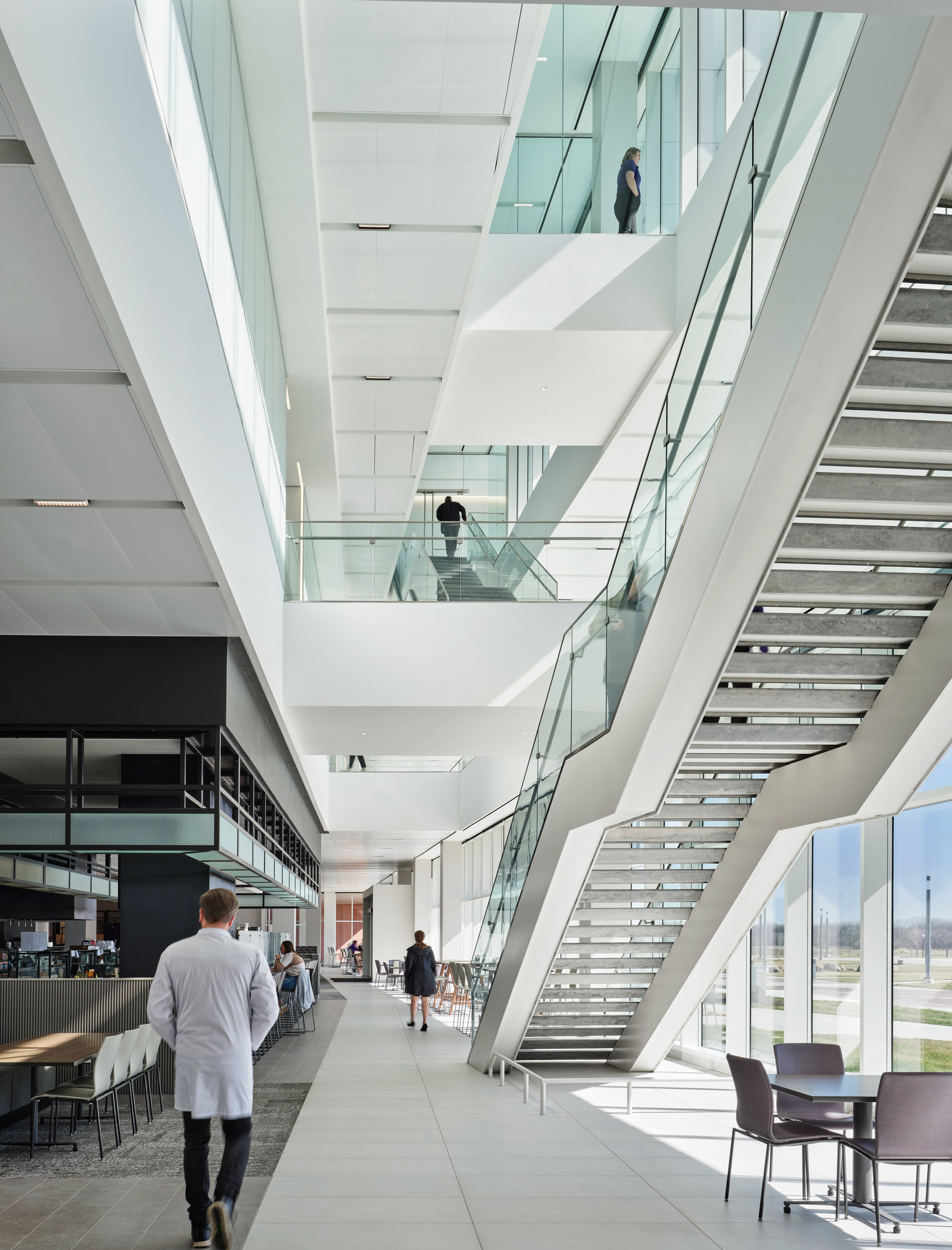
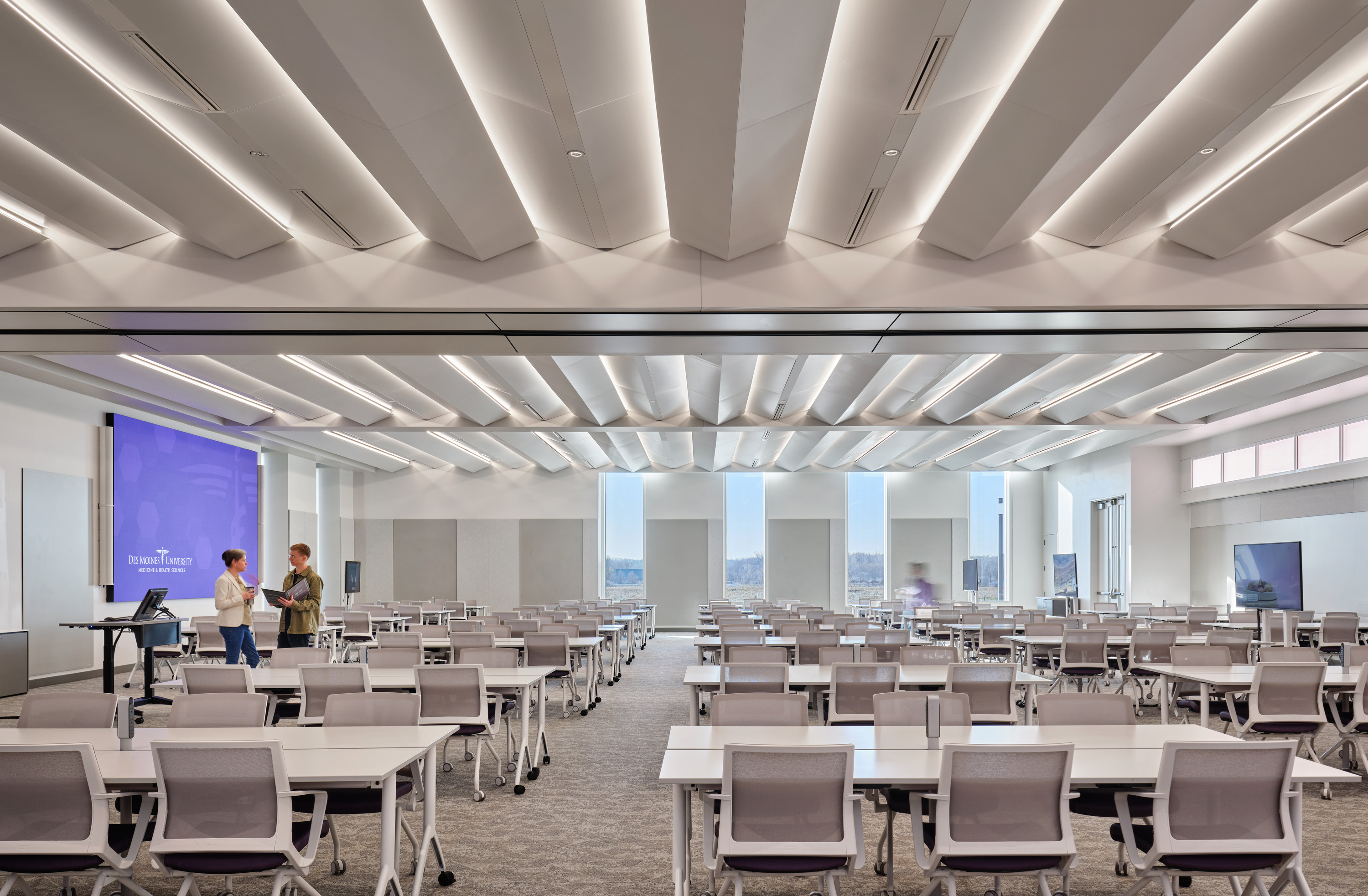

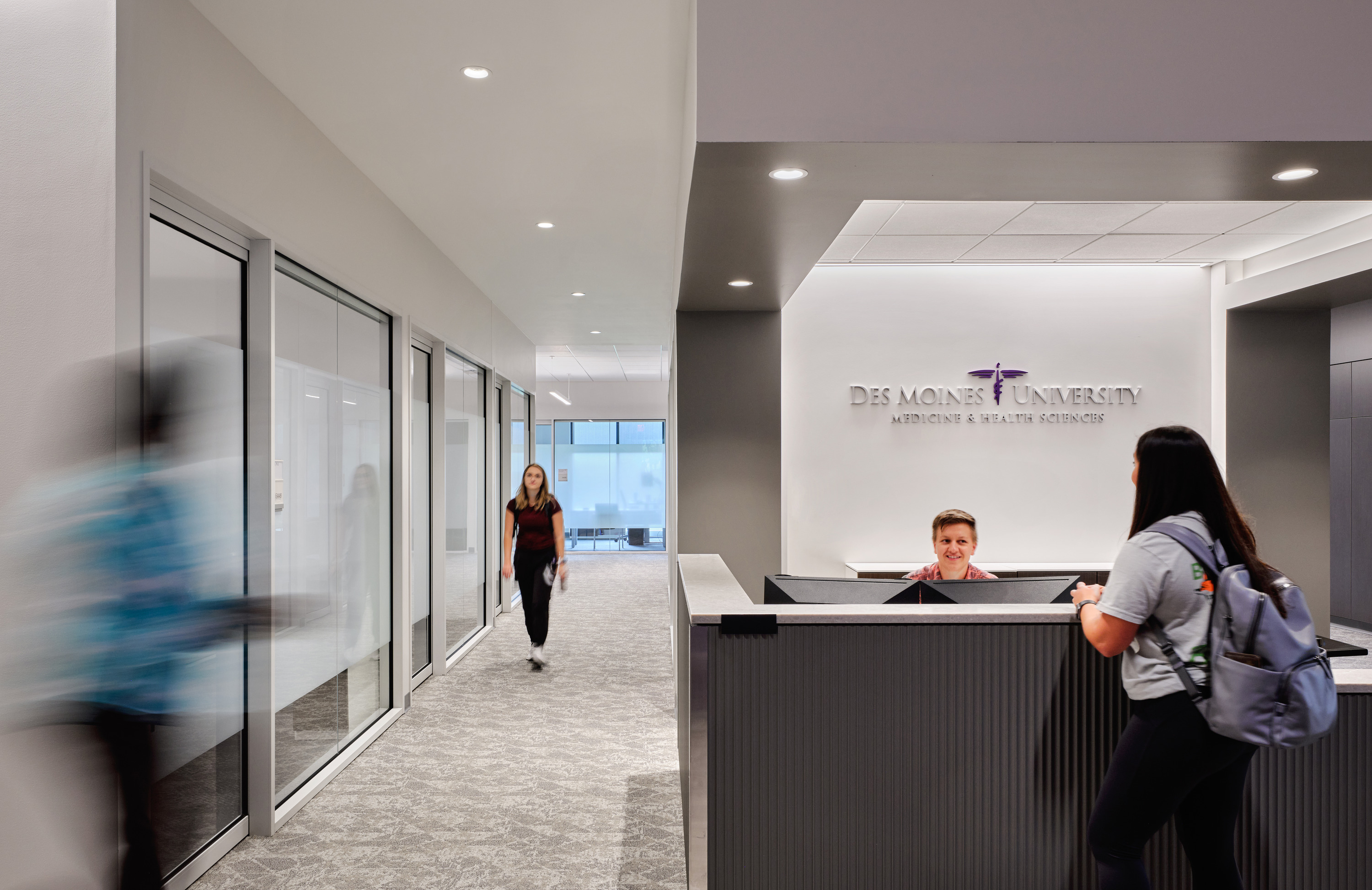
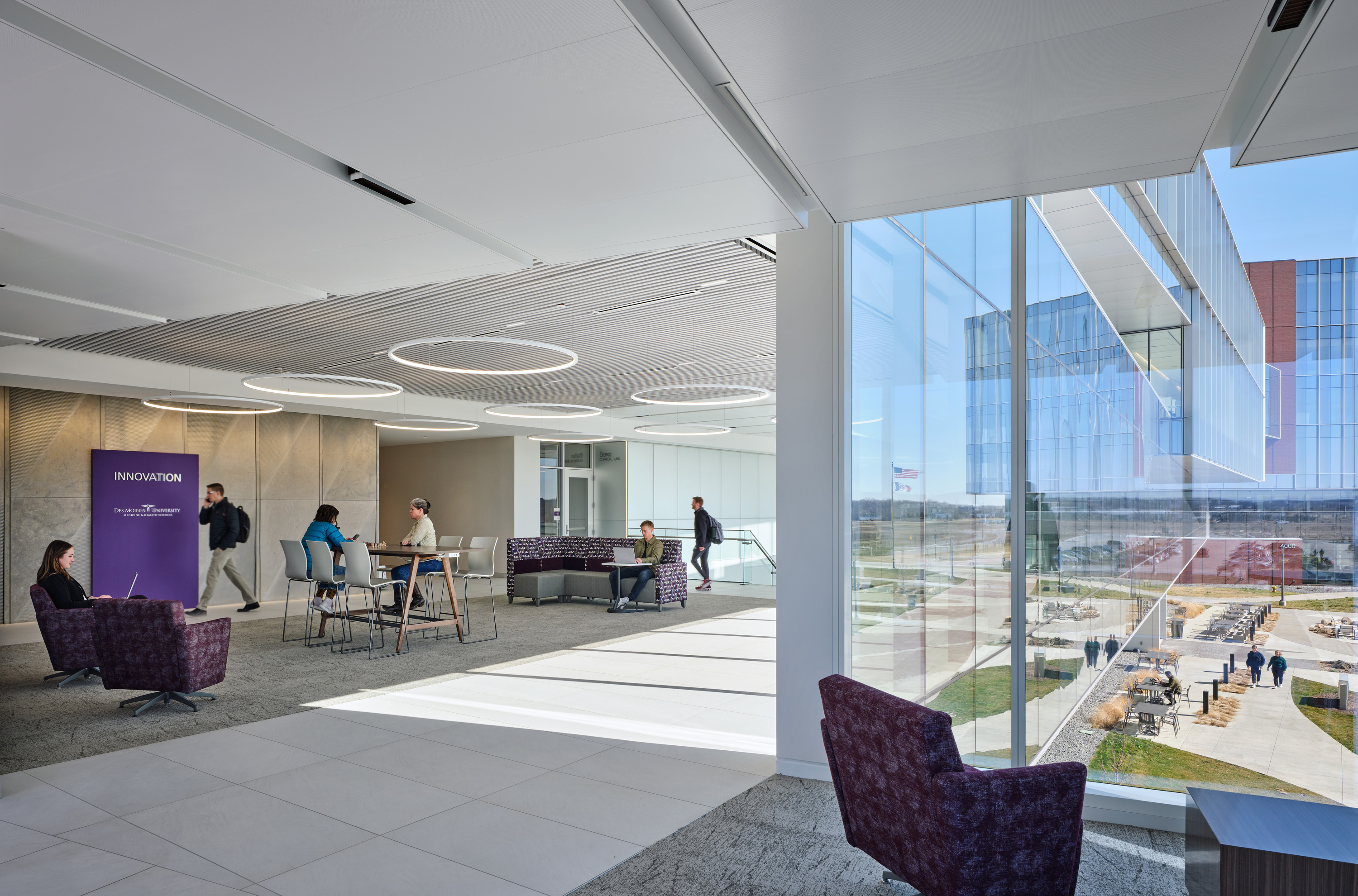
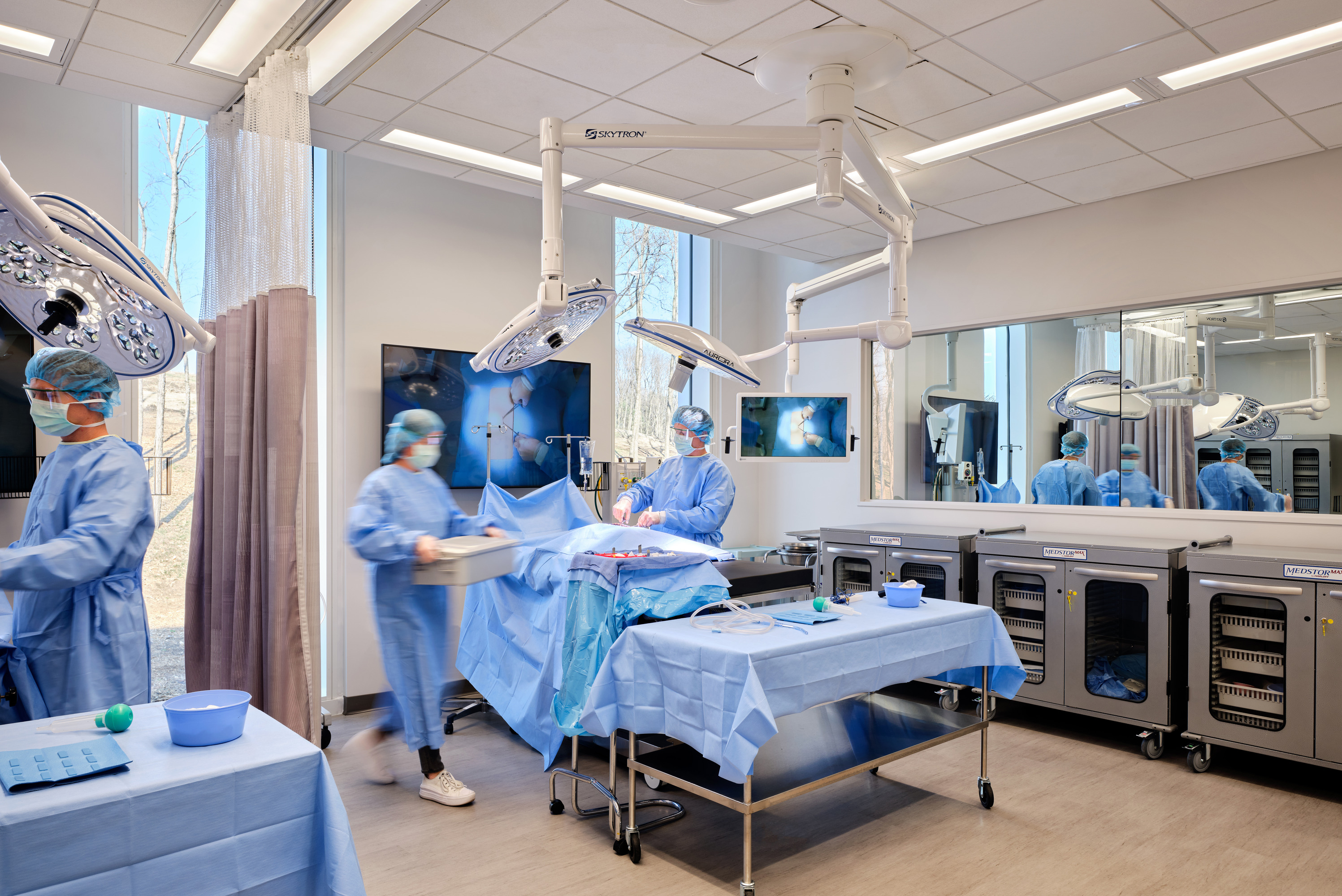
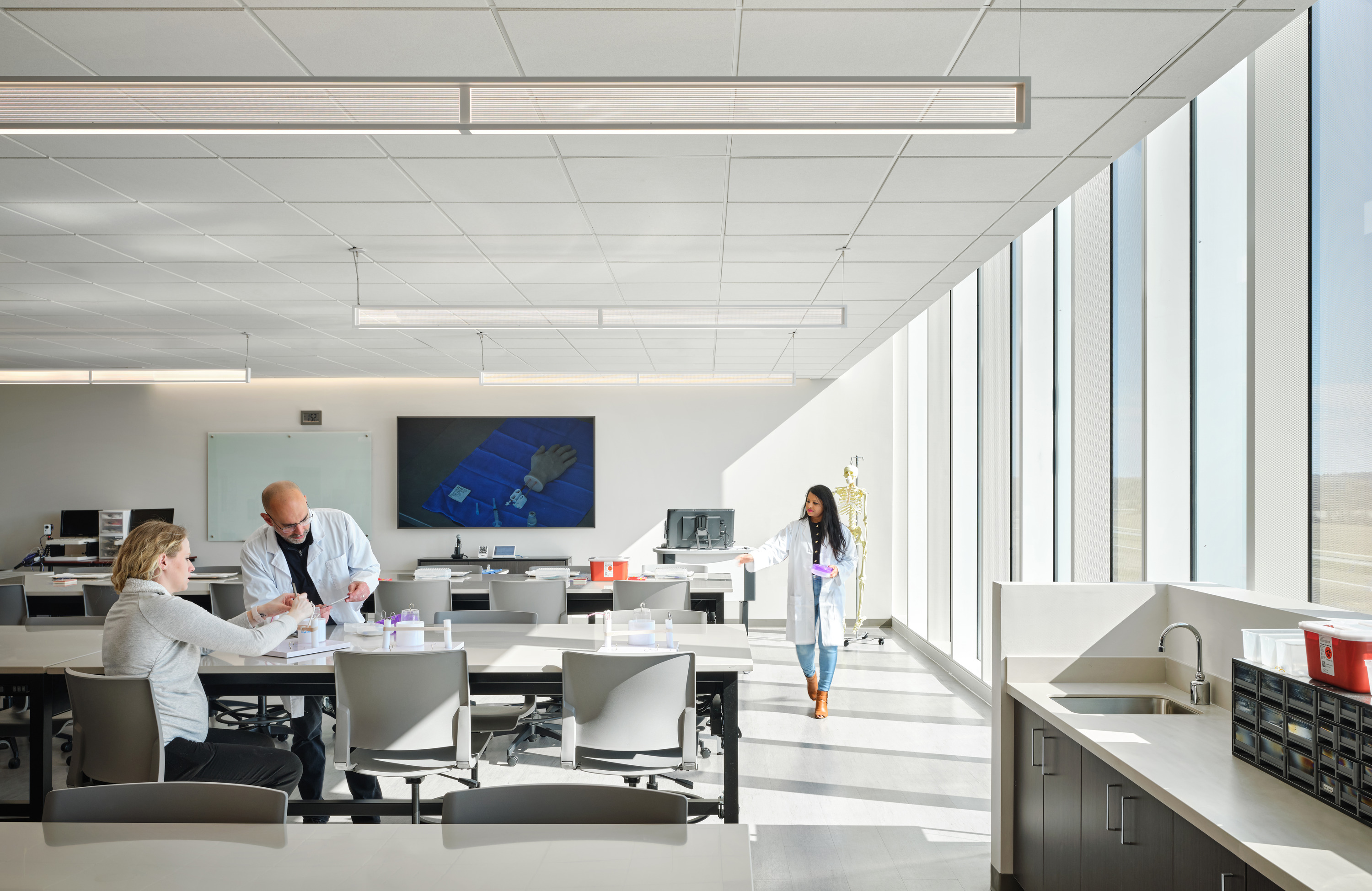

Related Stories
| Nov 3, 2014
An ancient former post office in Portland, Ore., provides an even older art college with a new home
About seven years ago, The Pacific Northwest College of Art, the oldest art college in Portland, was evaluating its master plan with an eye towards expanding and upgrading its campus facilities. A board member brought to the attention of the college a nearby 134,000-sf building that had once served as the city’s original post office.
| Oct 16, 2014
Perkins+Will white paper examines alternatives to flame retardant building materials
The white paper includes a list of 193 flame retardants, including 29 discovered in building and household products, 50 found in the indoor environment, and 33 in human blood, milk, and tissues.
| Oct 15, 2014
Harvard launches ‘design-centric’ center for green buildings and cities
The impetus behind Harvard's Center for Green Buildings and Cities is what the design school’s dean, Mohsen Mostafavi, describes as a “rapidly urbanizing global economy,” in which cities are building new structures “on a massive scale.”
| Oct 14, 2014
Proven 6-step approach to treating historic windows
This course provides step-by-step prescriptive advice to architects, engineers, and contractors on when it makes sense to repair or rehabilitate existing windows, and when they should advise their building owner clients to consider replacement.
| Oct 12, 2014
AIA 2030 commitment: Five years on, are we any closer to net-zero?
This year marks the fifth anniversary of the American Institute of Architects’ effort to have architecture firms voluntarily pledge net-zero energy design for all their buildings by 2030.
| Sep 24, 2014
Architecture billings see continued strength, led by institutional sector
On the heels of recording its strongest pace of growth since 2007, there continues to be an increasing level of demand for design services signaled in the latest Architecture Billings Index.
| Sep 22, 2014
4 keys to effective post-occupancy evaluations
Perkins+Will's Janice Barnes covers the four steps that designers should take to create POEs that provide design direction and measure design effectiveness.
| Sep 22, 2014
Sound selections: 12 great choices for ceilings and acoustical walls
From metal mesh panels to concealed-suspension ceilings, here's our roundup of the latest acoustical ceiling and wall products.
| Sep 17, 2014
New hub on campus: Where learning is headed and what it means for the college campus
It seems that the most recent buildings to pop up on college campuses are trying to do more than just support academics. They are acting as hubs for all sorts of on-campus activities, writes Gensler's David Broz.















